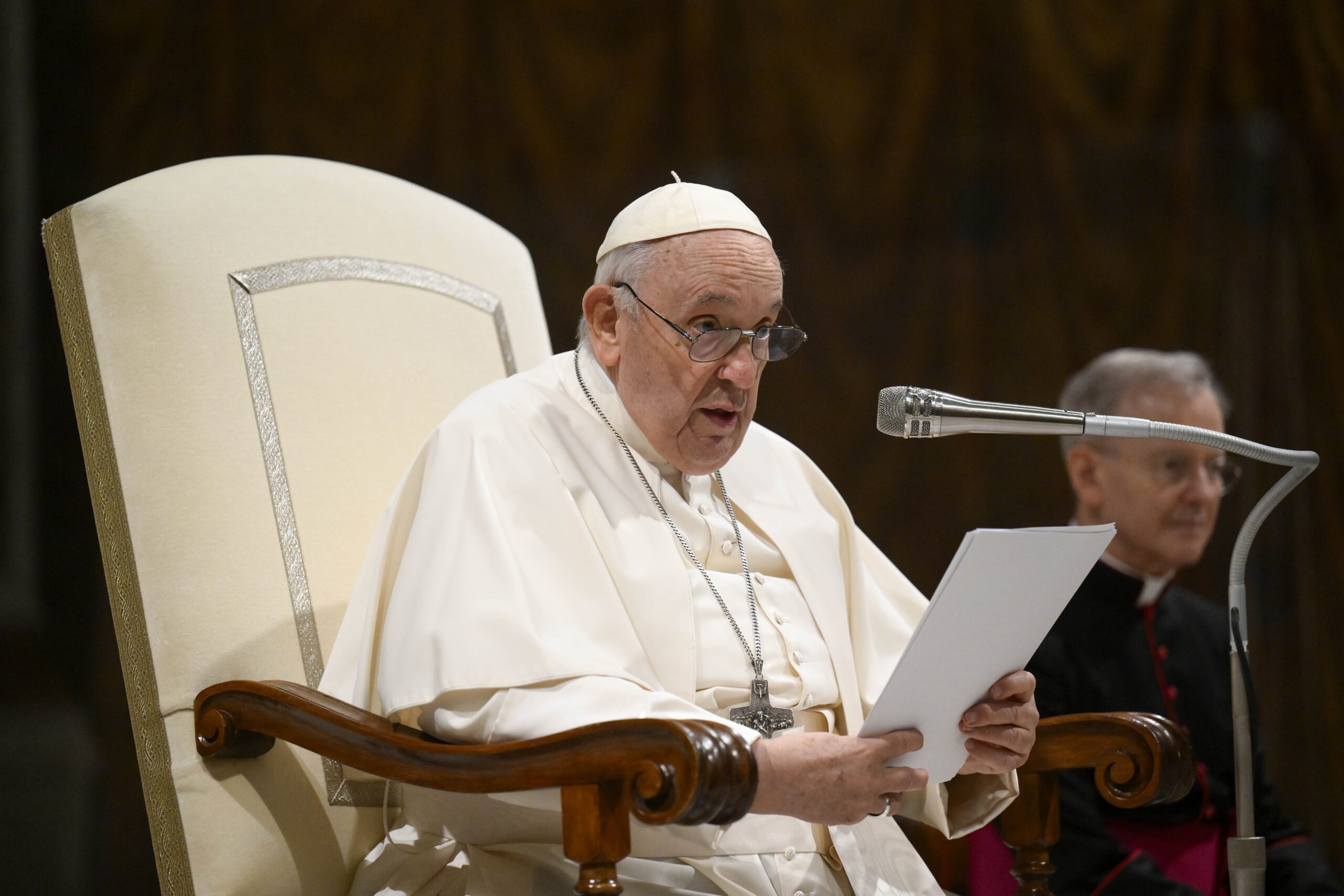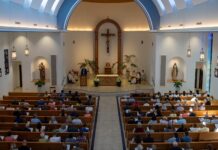By Justin McLellan, Catholic News Service
VATICAN CITY (CNS) — Under Michelangelo’s frescoed ceiling in the Sistine Chapel, Pope Francis told more than 200 musicians, writers, poets and other artists to be like prophets, pursuing true beauty and using their art to shake up the societies where they live.
Artists and prophets “can see things both in depth and from afar” while “peering into the horizon and discerning deeper realities,” he said June 23. “In doing so, you are called to reject the allure of that artificial, superficial beauty so popular today and often complicit with economic mechanisms that generate inequality.”
The audience with an international group of artists marked 50 years since St. Paul VI inaugurated the modern and contemporary art collection in the Vatican Museums by celebrating Mass in the Sistine Chapel with artists from around the world.
Pope Francis told the artists to distance themselves from depicting a “cosmetic” form of beauty “that conceals rather than reveals” and to instead create art that “strives to act as a conscience critical of society, unmasking truisms.”
“Like the biblical prophets, you confront things that at times are uncomfortable; you criticize today’s false myths and new idols, its empty talk, the ploys of consumerism, the schemes of power,” Pope Francis said.
One way of doing that, he said, is through the “marvelous virtue” of irony.
“The Bible is rich in touches of irony, poking fun at presumptions of self-sufficiency, dishonesty, injustice and cruelty lurking under the guise of power and even at times the sacred,” the pope said.
American poet Patricia Lockwood told Catholic News Service after the papal audience that she was struck by how the pope encouraged artists “to use humor to also treat religiosity in a respectful way,” affirming “that there are those of us that are called to that as well, to puncture false pieties.”
Lockwood published a 2017 memoir about her upbringing as the daughter of a Lutheran minister who converted to Catholicism, a book that was awarded for its humorous style. “It’s good to know that there is a place for people like me to be writing about religion,” she told CNS after meeting the pope.
Novelist Jhumpa Lahiri and directors Ken Loach and Abel Ferrara also participated in the audience along with a slew of Italian A-listers.
Speaking to reporters after the audience, Cardinal José Tolentino de Mendonça, prefect of the Dicastery for Culture and Education, which organized the meeting, said that Pope Francis “has long shown an interest in an alliance with the world of art, for him artists are allies in dreaming of a better world.”
In fact, Pope Francis told the artists seated before him that they allies in addressing issues close to his heart: “the defense of human life, social justice, concern for the poor, care for our universal home, universal human fraternity.”
Something that art and faith have in common, the pope said, is their disruptive nature.
“Art and faith cannot leave things as they are. They change, transform, move and convert them,” he said.
Yet Pope Francis recalled that true beauty revealed by artists “is always the reflection of harmony,” which creates “a unity that is not uniformity but open to multiplicity.”
Harmony, the pope said, is especially needed in today’s “age of media-driven forms of ideological colonization and devastating conflicts.”
“The church, too, feels the effects of this,” he said. “Conflict can act under a false pretense of unity, from which arise divisions, factions and forms of narcissism.”
Bishop Paul Tighe, secretary for the culture section of the dicastery, told reporters following the audience that there were no “clear criteria” for choosing the artists invited to the audience, but that with the meeting the Vatican hoped to communicate its openness to engaging with modern artists.
“We’re ready for a conversation; we want to hear and talk with, dialogue with artists because we think artists have perspectives and ways of seeing the world that we need to take account of,” he said.
While the meeting took place in one of Catholicism’s most iconic sites, Bishop Tighe noted that the Vatican hopes to involve itself in artistic events “on the more secular end of things,” such as literary festivals and musical performances. He noted the Holy See’s participation in the Venice Architecture Biennale as an example.
The Vatican, he said, wants “to let artists know that they are welcome here and they’re friends.”







